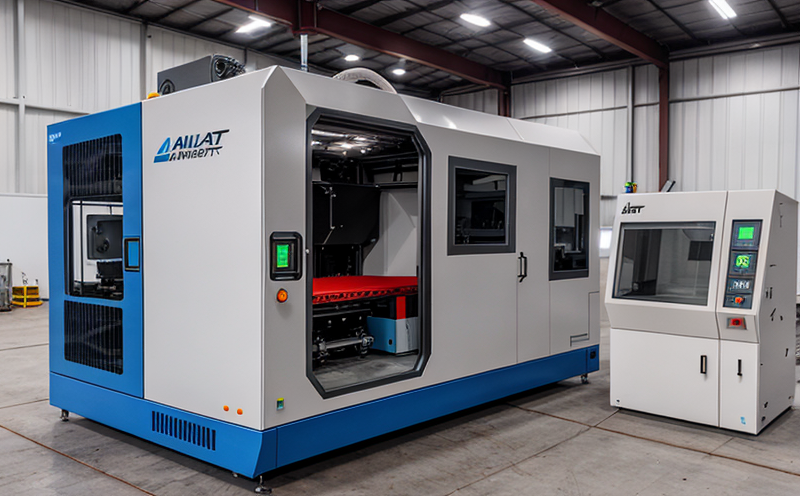ISO 52906 Density Testing of AM Components
The testing and validation of additive manufactured (AM) components are critical to ensuring product reliability and safety. The ISO 52906 standard provides a robust framework for density testing, which is essential in assessing the quality and integrity of additively manufactured parts.
ISO 52906:2018 outlines methods for determining the mass and volume of AM components to calculate their density. This test ensures that fabricated parts meet design specifications, conform to regulatory standards, and perform as intended under operational conditions. In industrial manufacturing and processing, where precision is paramount, this test helps eliminate potential defects early in the production process.
The density of a component is defined by its mass per unit volume (ρ = m/V). This value can vary depending on the material composition, microstructure, and manufacturing parameters used during AM processes. Accurate measurement of density aids in quality control, ensures product homogeneity, and supports design optimization. For instance, higher than expected density might indicate over-sintering or poor porosity distribution, while lower values could suggest incomplete sintering.
The standardization provided by ISO 52906 is crucial for industries relying on AM technology, such as aerospace, automotive, medical devices, and electronics. It offers a common language and set of procedures that ensure consistency across different manufacturing facilities worldwide.
| Parameter | Description |
|---|---|
| Density Calculation | The mass (m) is determined by weighing the component using precision scales. The volume (V) can be calculated geometrically or measured using immersion techniques. |
| Sample Preparation | Components must be cleaned of any residual powder, support structures, and other contaminants before testing to ensure accurate measurements. |
| Measurement Precision | The accuracy of the test depends on the precision of the scales used for mass measurement. Typically, this should not exceed ±0.1% of the measured value. |
| Data Analysis | Density values are compared against design specifications and industry standards to assess compliance. |
By adhering to ISO 52906, manufacturers can enhance their ability to produce high-quality AM parts that meet stringent safety and performance requirements. This process is especially important in industries where the failure of a single component could lead to catastrophic consequences, such as aircraft or medical implants.
Scope and Methodology
- Determining the mass (m) using precision scales.
- Measuring the volume (V) either geometrically or by immersion techniques.
- Calculating density (ρ = m/V).
- Comparing results against design specifications and industry standards.
The methodology outlined in ISO 52906 ensures that all tests are conducted under controlled conditions, minimizing variability. This approach helps in identifying any deviations from expected values early in the manufacturing process, allowing for corrective actions to be taken promptly.
For geometrically complex parts or those with internal cavities, the volume can be calculated using computational methods such as finite element analysis (FEA). For simpler geometries, immersion techniques are preferred. In both cases, it is crucial to account for any air voids and ensure that all measurements are taken at room temperature.
Why Choose This Test
- Ensures compliance with international standards (ISO 52906).
- Provides a standardized approach to density testing, ensuring consistency across different facilities and manufacturers.
- Helps in identifying potential defects early in the manufacturing process through precise measurement of mass and volume.
- Supports quality control by comparing test results against design specifications and industry standards.
- Aids in optimizing design parameters for improved part performance and reliability.
- Reduces the risk of product failure due to incorrect density, which is critical in safety-critical applications like aerospace or medical devices.
The ISO 52906 test is indispensable for ensuring that additive manufactured components are of the highest quality. By adhering to this standard, manufacturers can demonstrate their commitment to producing reliable and safe products, thereby enhancing customer trust and satisfaction.
Use Cases and Application Examples
The density testing outlined in ISO 52906 is particularly beneficial for industries where precision and reliability are crucial. Some key use cases include:
- Aerospace Manufacturing: Ensuring that AM components used in aircraft meet stringent safety standards.
- Medical Devices: Verifying the integrity of implants and prosthetics to ensure they function as intended.
- Automotive Industry: Quality control for parts that must withstand high stress conditions.
- Electronics Manufacturing: Ensuring that components meet size and weight requirements without compromising performance.
In each of these sectors, the density test plays a vital role in ensuring that AM parts are produced consistently and to specification. This not only improves product quality but also reduces the risk of costly failures and recalls.
For example, in aerospace manufacturing, the failure of an engine component could lead to catastrophic consequences. By using ISO 52906 density testing, manufacturers can identify potential issues early on, ensuring that only reliable parts are used in production.





